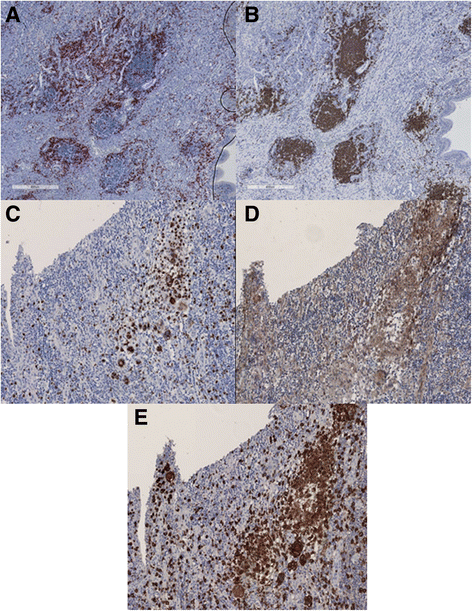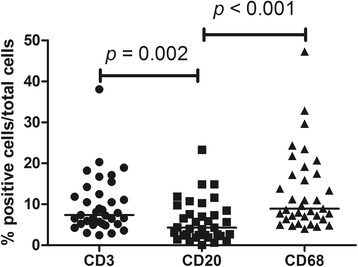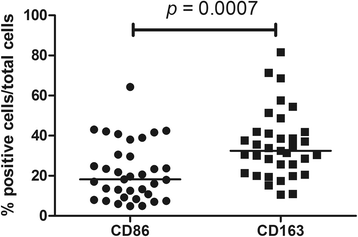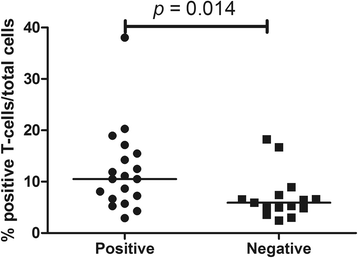M2 macrophage is the predominant phenotype in airways inflammatory lesions in patients with granulomatosis with polyangiitis
- PMID: 28521792
- PMCID: PMC5437644
- DOI: 10.1186/s13075-017-1310-4
M2 macrophage is the predominant phenotype in airways inflammatory lesions in patients with granulomatosis with polyangiitis
Abstract
Background: Macrophages may present two distinct phenotypes indicated as M1 and M2 under different stimuli. M1 and M2 macrophages have divergent functions that range from enhancement of inflammation for M1 to tissue repair and remodeling for M2 macrophages. The objective of this study was to evaluate the distribution of M1 and M2 macrophage phenotypes in biopsies from the airways of patients with active granulomatosis with polyangiitis (GPA) and to analyze their associations with T and B cells in those biopsies, and with nasal carriage of Staphylococcus aureus, disease parameters and therapy.
Methods: Consecutive GPA patients (n = 35) with active airway disease, who underwent respiratory tract biopsy were included. Immunohistochemical evaluation was performed to assess the distribution of macrophages and T and B cells using the markers CD68, CD3 and CD20, respectively. CD86 was used as the M1 marker and CD163 as the M2 marker while Tbet and GATA-3 were used as Th1 and Th2 markers, respectively. At the time of the biopsy patients were assessed for nasal carriage of Staphylococcus aureus and treatment.
Results: Percentages of macrophages and T cells were significantly higher than those of B cells in lesional tissue from the respiratory tract in GPA. M2 macrophages and Th2 cells were more frequent than M1 macrophages (p = 0.0007) and Th1 cells (p < 0.0001), respectively. Percentages of T cells were higher in nose biopsies than in biopsies from other sites (p = 0.021); macrophages and CD163+ macrophages were more predominant in biopsy sites other than the nose (p = 0.039 and p = 0.012, respectively). Carriage of Staphylococcus aureus was associated with higher T cell scores (p = 0.014). The frequency of macrophages, especially M2 macrophages, was higher in GPA patients treated with immunosuppressive agents (p = 0.010); daily prednisolone dose was positively correlated with all macrophage markers. However, in multivariate analysis no independent associations were found between disease parameters and therapy with macrophage markers or T cells.
Conclusion: In GPA, M2 is the predominant macrophage phenotype in the respiratory tract. Although some associations were observed between macrophages and T cells with therapy and nasal carriage of Staphylococcus aureus, they were not independently significant in multivariate analysis.
Keywords: Antineutrophil cytoplasmic antibodies; Granulomatosis with polyangiitis; Macrophages; T cells; granuloma.
Figures






References
MeSH terms
Substances
LinkOut - more resources
Full Text Sources
Other Literature Sources
Medical
Research Materials

